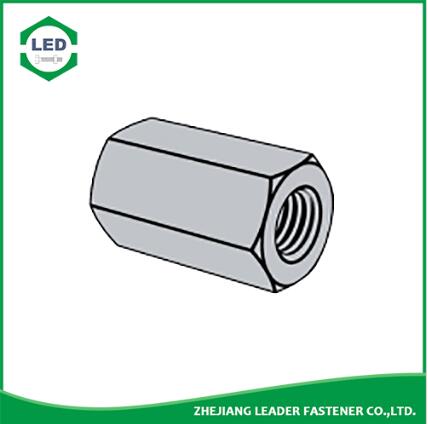Navigating Potential Risks and Challenges When Using Rod Coupling Nuts
2024-03-12
Rod coupling nuts are invaluable components in various mechanical assemblies, offering a convenient means of extending the length of threaded rods or studs and facilitating secure connections. However, like any other mechanical component, rod coupling nuts are not without their risks and challenges. In this blog post, we'll explore some of the potential risks and challenges associated with using rod coupling nuts, as well as strategies to mitigate them effectively.
1. Insufficient Thread Engagement
One of the primary risks associated with using rod coupling nuts is insufficient thread engagement between the nut and the threaded rods or studs. Inadequate thread engagement can compromise the integrity and stability of the connection, leading to loosening or failure under load. It's essential to ensure that the coupling nut provides sufficient thread engagement to maintain a secure and stable connection.
2. Overloading and Overloading
Another risk is overloading or over-tightening of rod coupling nuts, which can exceed the recommended load capacity of the assembly and lead to mechanical failure. Overloading can result in stress concentrations, deformation, or fracture of the coupling nut or threaded rods, compromising the structural integrity of the assembly. It's crucial to adhere to the manufacturer's recommendations for load capacity and tightening torque to prevent overloading and ensure safe operation.
3. Corrosion and Environmental Factors
Rod coupling nuts are often used in outdoor or corrosive environments where they may be exposed to moisture, chemicals, or extreme temperatures. Corrosion and environmental factors can degrade the material strength and integrity of the coupling nut over time, leading to premature failure. It's essential to choose a coupling nut made from a corrosion-resistant material and implement appropriate protective measures, such as coatings or sealants, to mitigate the effects of corrosion and environmental exposure.
4. Misalignment and Installation Errors
Misalignment or improper installation of rod coupling nuts can result in uneven loading, stress concentrations, or improper engagement with the threaded rods. This can lead to reduced stability, premature wear, or failure of the assembly. It's essential to carefully align the coupling nut with the threaded rods and ensure proper installation techniques, including adequate tightening torque and thread engagement, to avoid misalignment and installation errors.
5. Compatibility and Dimensional Accuracy
Ensuring compatibility and dimensional accuracy between the rod coupling nut and the threaded rods or studs is critical to achieving a secure and reliable connection. Mismatched thread sizes, pitches, or diameters can result in poor fitment, reduced load capacity, or thread stripping. It's essential to verify the specifications of the coupling nut and the threaded rods and select compatible components to avoid compatibility issues and ensure proper functionality.
Mitigating Strategies
To mitigate the risks and challenges associated with using rod coupling nuts, consider the following strategies:
- Conduct thorough inspections of coupling nuts and threaded rods for signs of wear, damage, or corrosion.
- Adhere to manufacturer's recommendations for load capacity, tightening torque, and installation procedures.
- Implement preventive maintenance measures, such as regular lubrication and corrosion protection, to extend the lifespan of coupling nuts.
- Provide adequate training and supervision for personnel involved in the installation and maintenance of mechanical assemblies.
- Consider consulting with engineering professionals or specialists to assess the suitability of coupling nuts for specific applications and environments.
Conclusion
While rod coupling nuts offer numerous benefits for extending threaded rods and facilitating secure connections in mechanical assemblies, they also pose certain risks and challenges that must be addressed to ensure safe and reliable operation. By understanding these potential risks and implementing appropriate mitigation strategies, engineers, contractors, and maintenance personnel can effectively manage the challenges associated with using rod coupling nuts and maintain the integrity of their mechanical systems.



